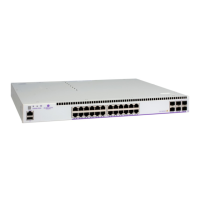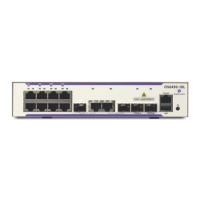Routed VPLS
Page 298 7210 SAS M Services Guide
Routed VPLS Specific ARP Cache Behavior
In typical routing behavior, the system uses the IP route table to select the egress interface and then
at the egress forwarding engine, an ARP entry is used forward the packet to the appropriate
Ethernet MAC. With routed VPLS, the egress IP interface may be represented by multiple egress
(VPLS service virtual ports).
The following tables describes how the ARP cache and MAC FIB entry states interact.
The allow-ip-int-binding VPLS Flag
The allow-ip-int-binding flag on a VPLS service context is used to inform the system that the
VPLS service is enabled for routing support. The system uses the setting of the flag as a key to
determine what type of ports the VPLS service may span.
The system also uses the flag state to define which VPLS features are configurable on the VPLS
service to prevent enabling a feature that is not supported when routing support is enabled.
Routed VPLS SAPs only Supported on Standard Ethernet Ports
The allow-ip-int-binding flag is set (routing support enabled) on a VPLS service. SAPs within the
service can be created on standard Ethernet ports.
Table 13: Routing behavior in RVPLS and interaction ARP Cache and MAC FIB
ARP Cache Entry MAC FIB
Entry
Routing or System behavior
ARP Cache Miss (No
Entry)
Known or
Unknown
Triggers a request to control plane ARP
processing module, to send out an ARP
request, out of all the SAPs. (also known
as virtual ports) of the VPLS instance.
ARP Cache Hit Known Forward to specific VPLS virtual port or
SAP.
Unknown This behavior cannot happen typically in
7210 SAS, as and when a L2 entry is
removed from the FDB, the matching
MAC address is also removed from the
ARP cache.

